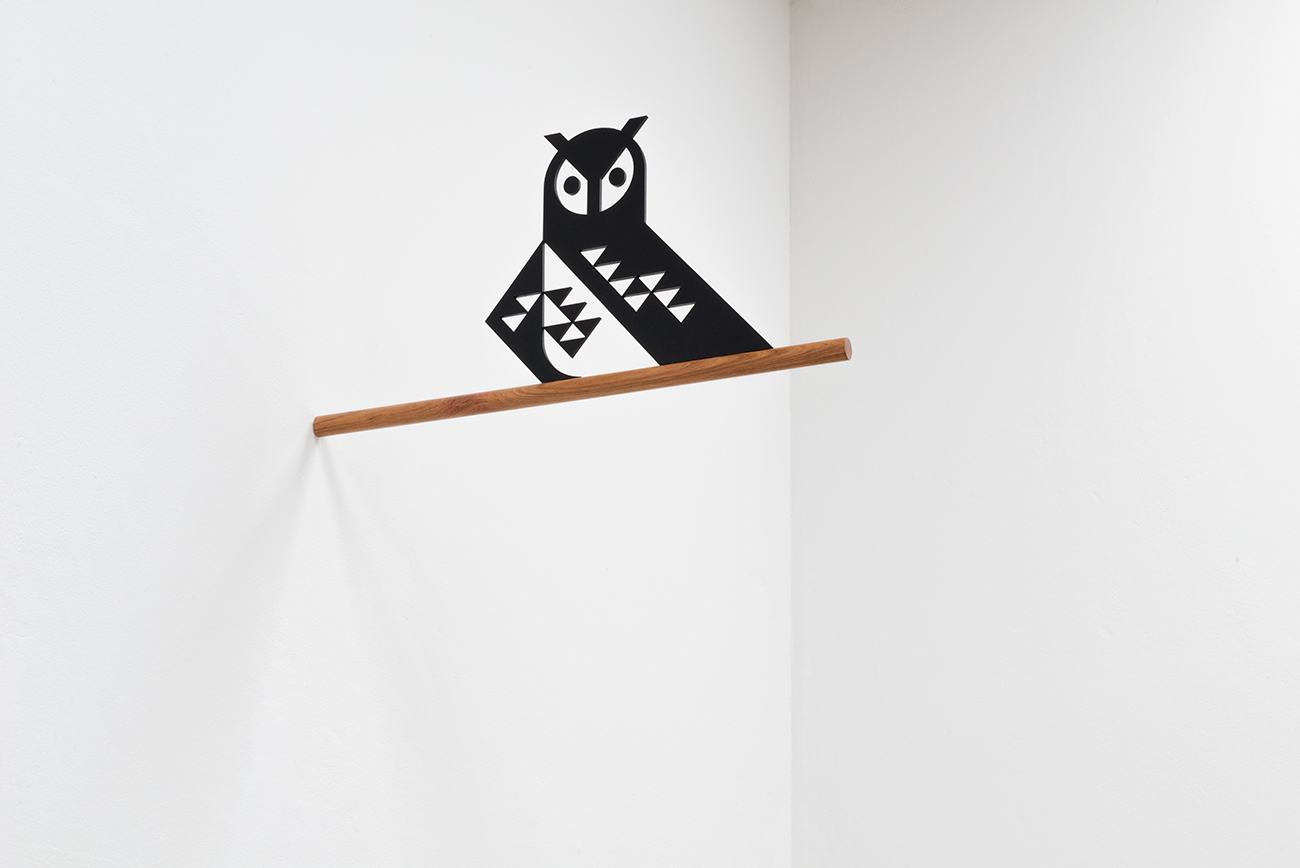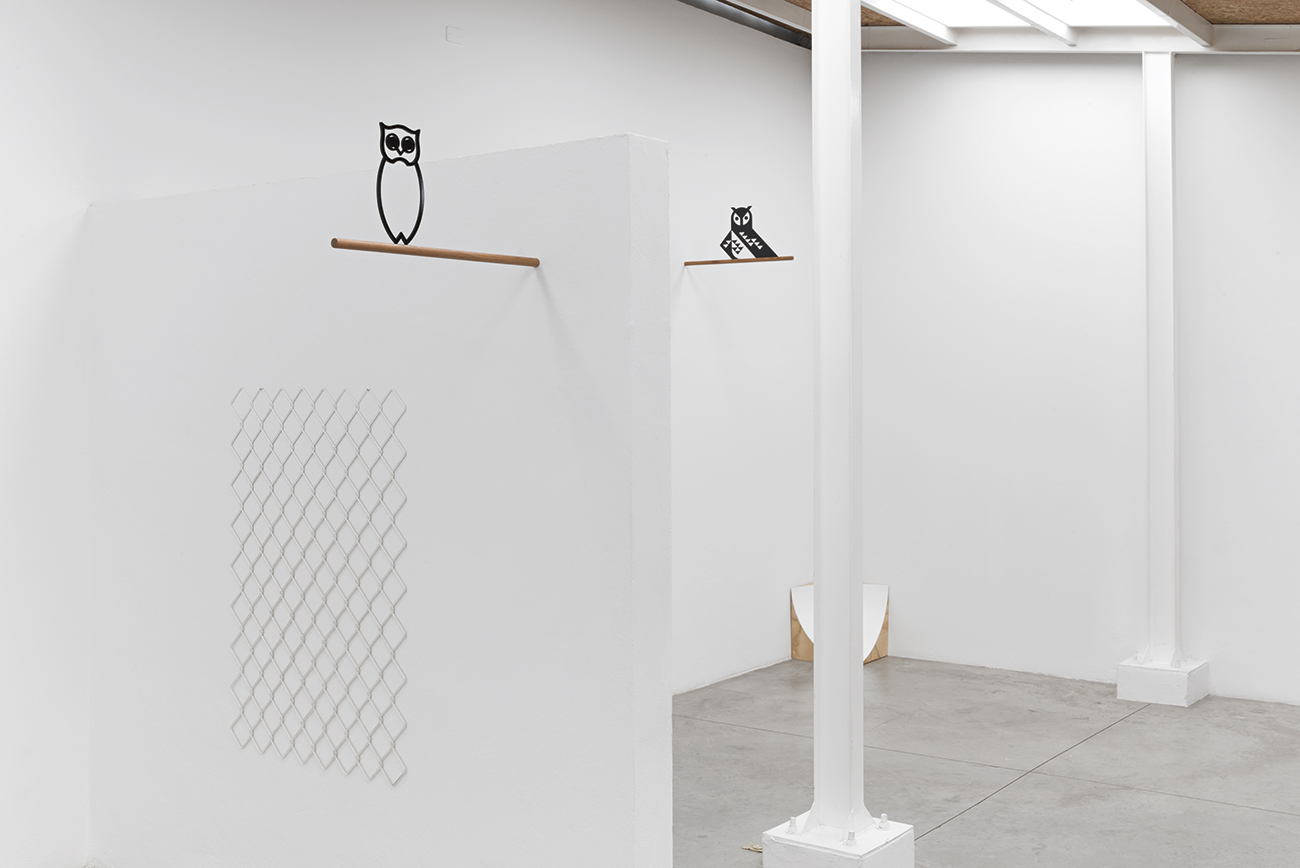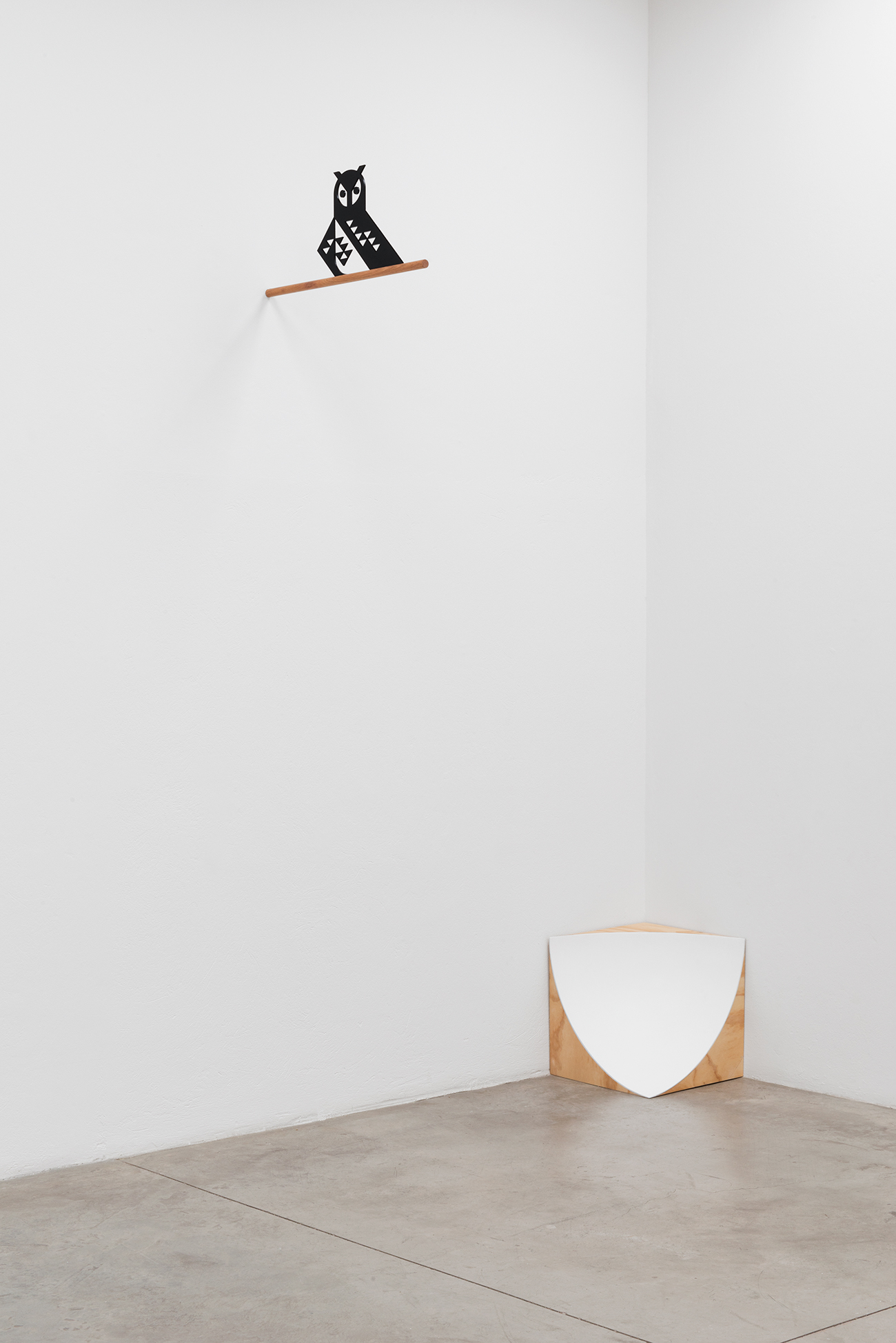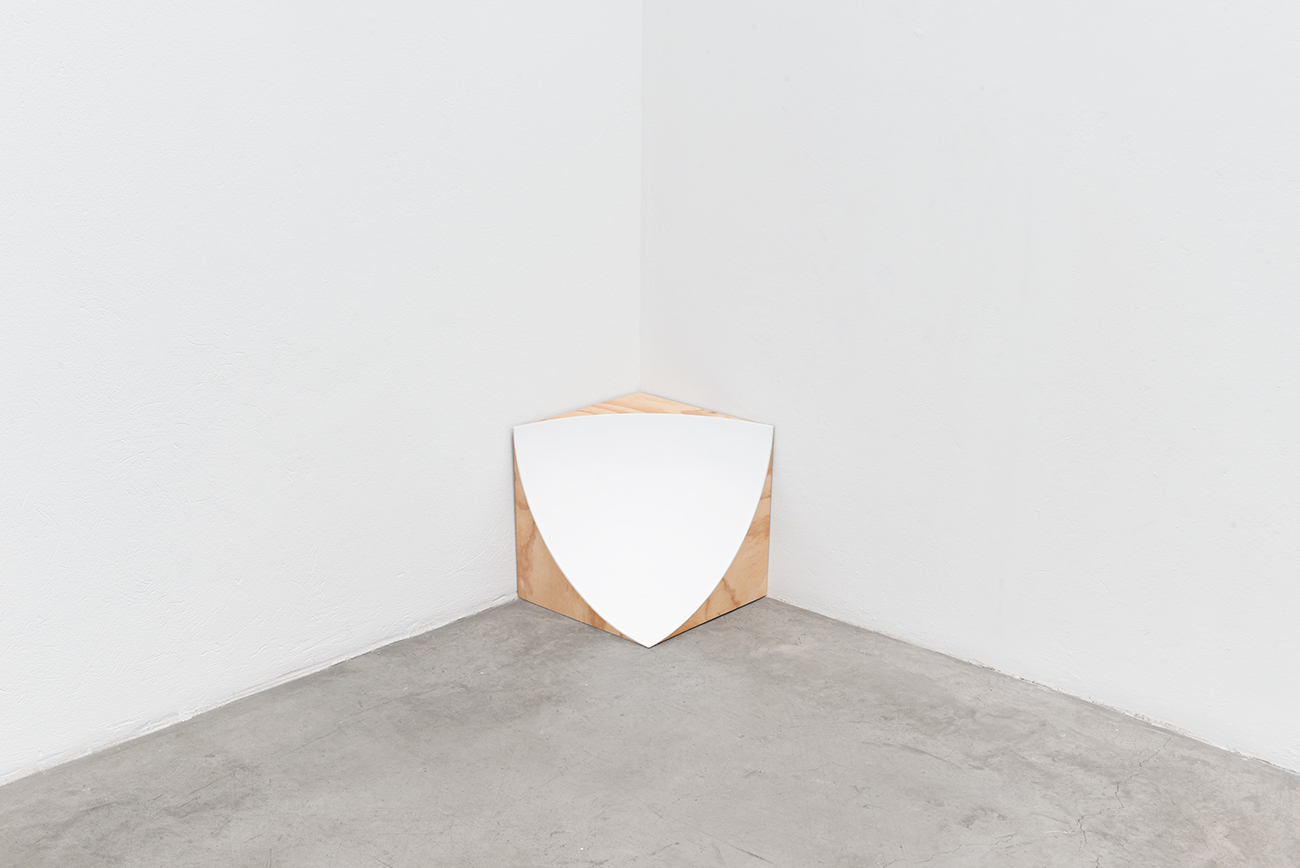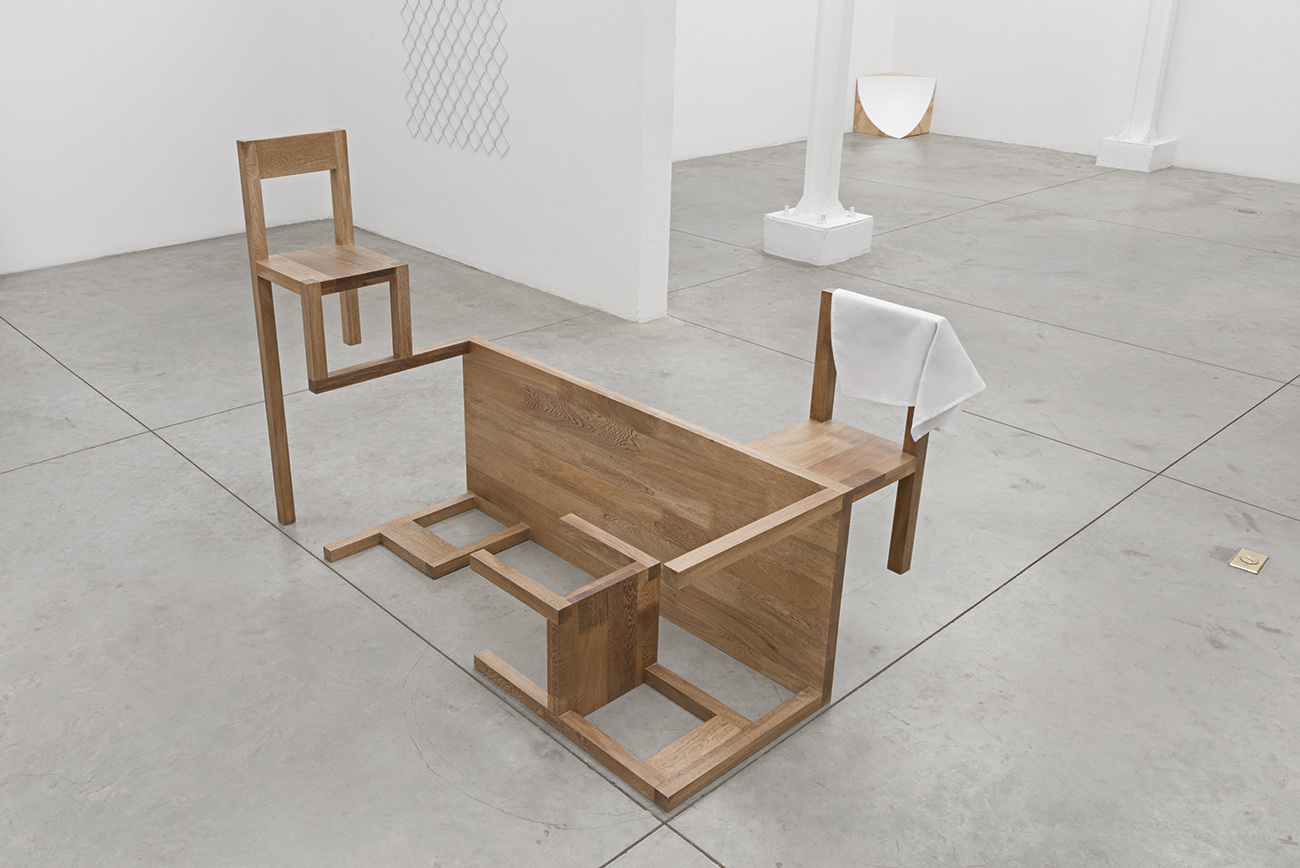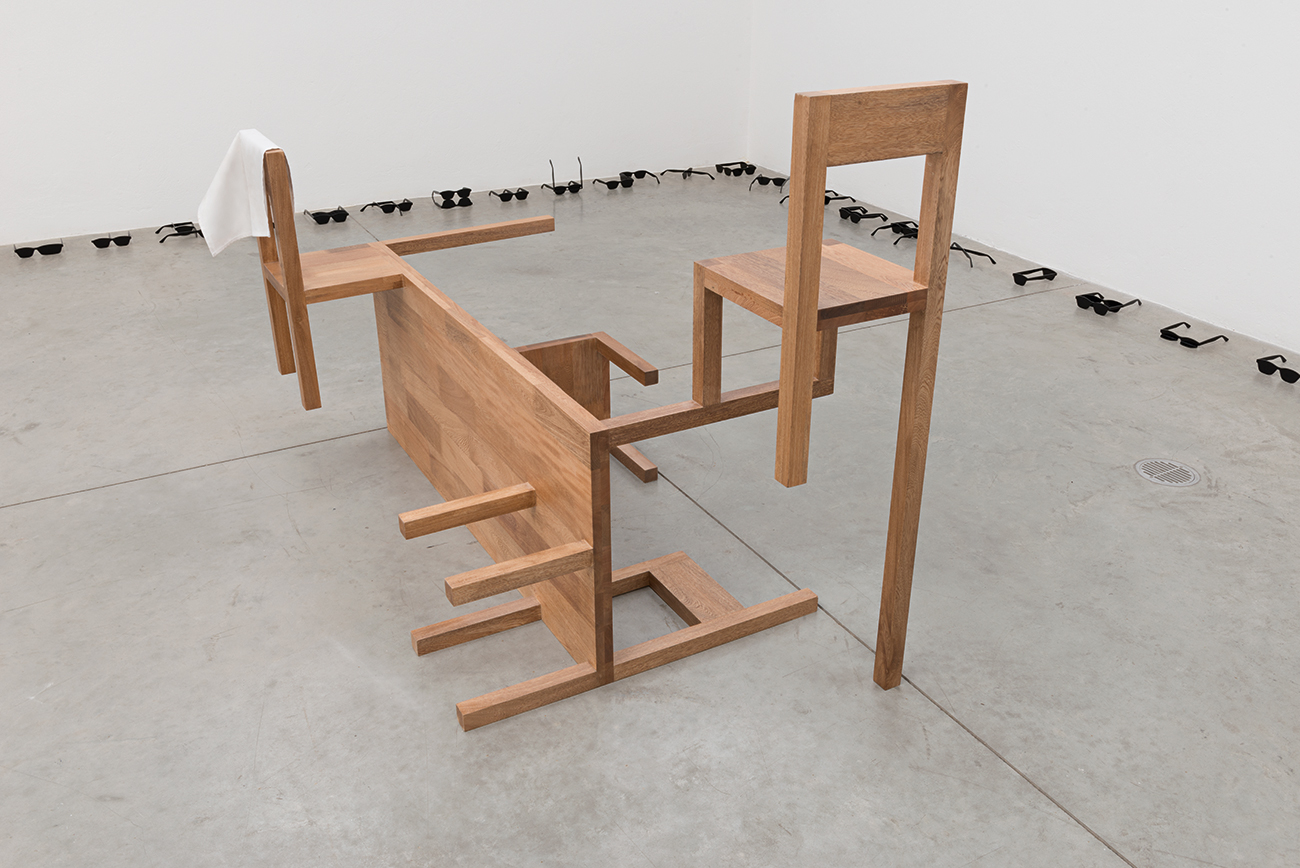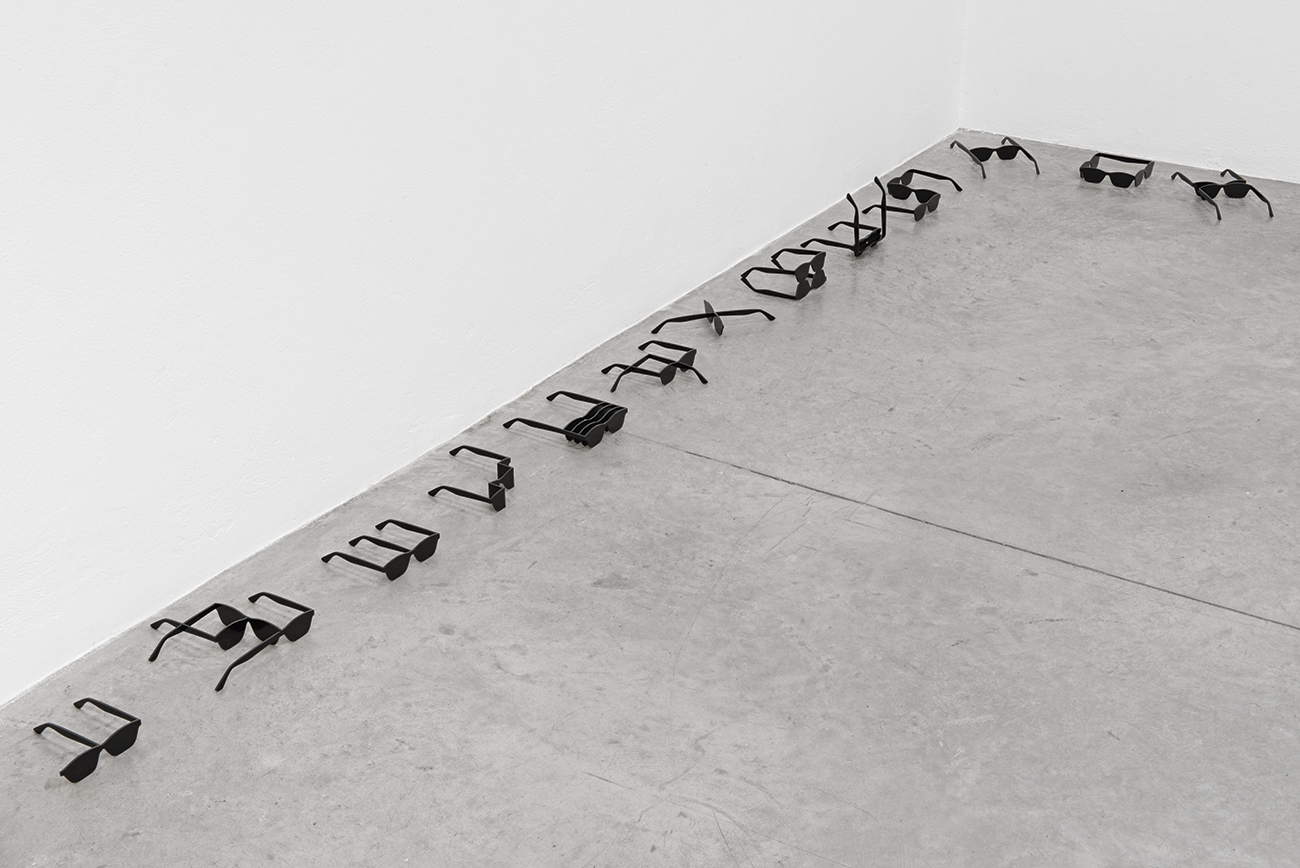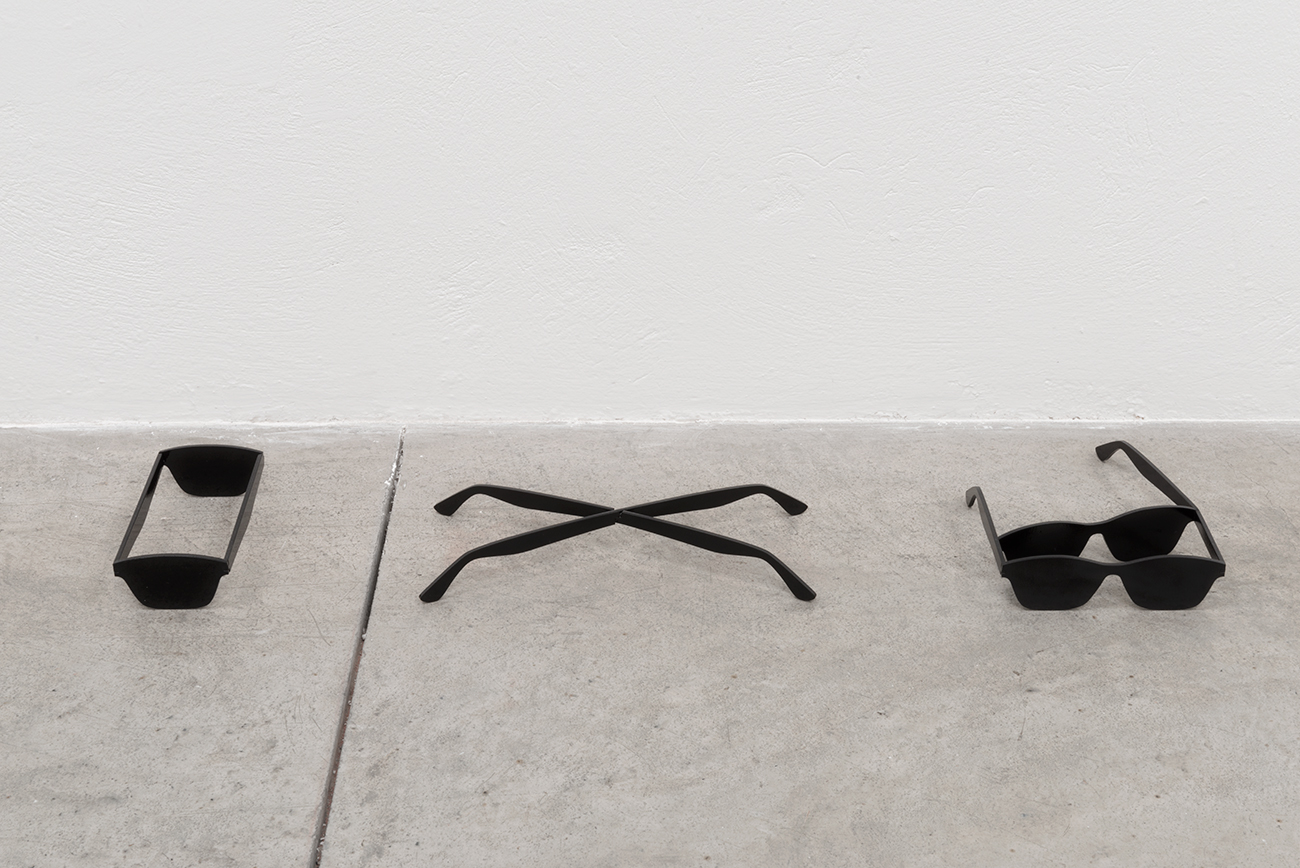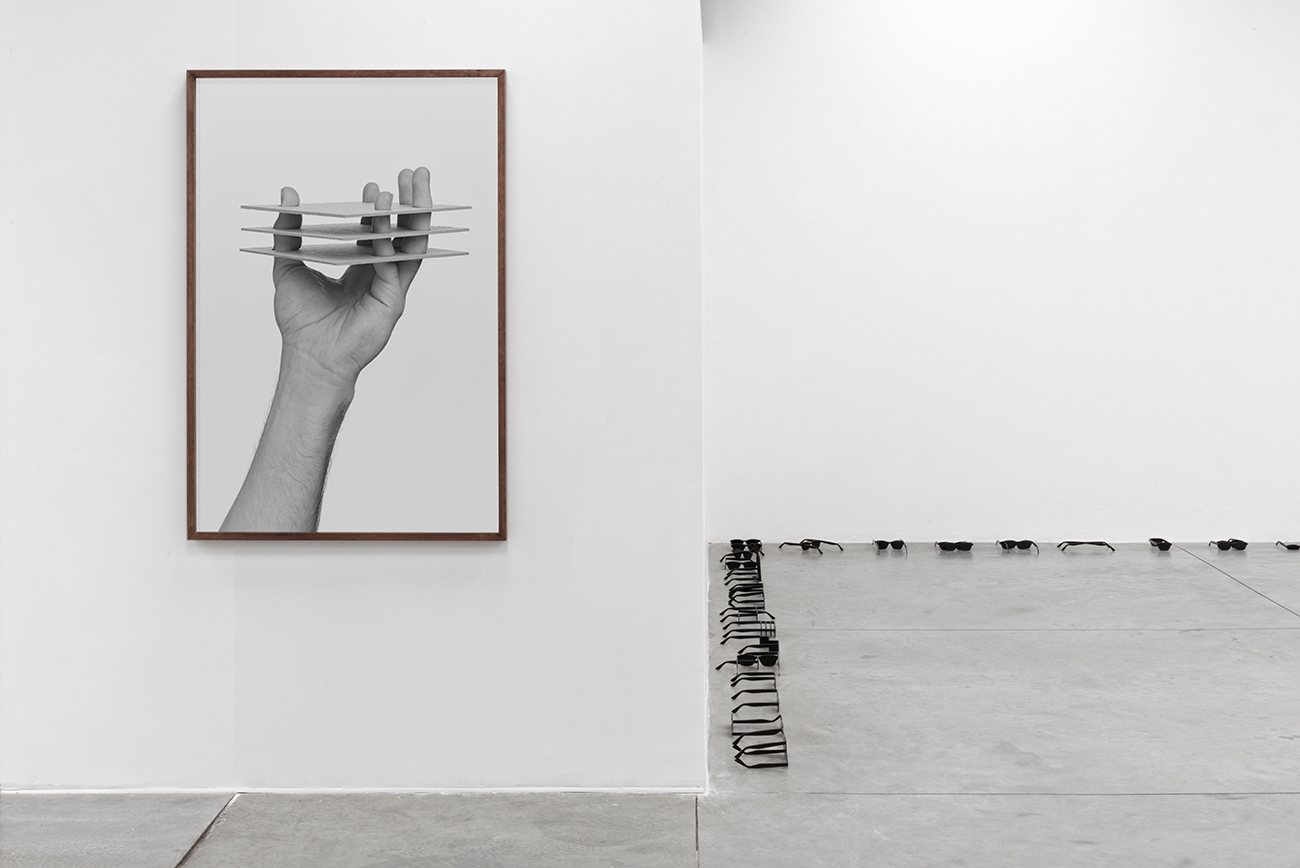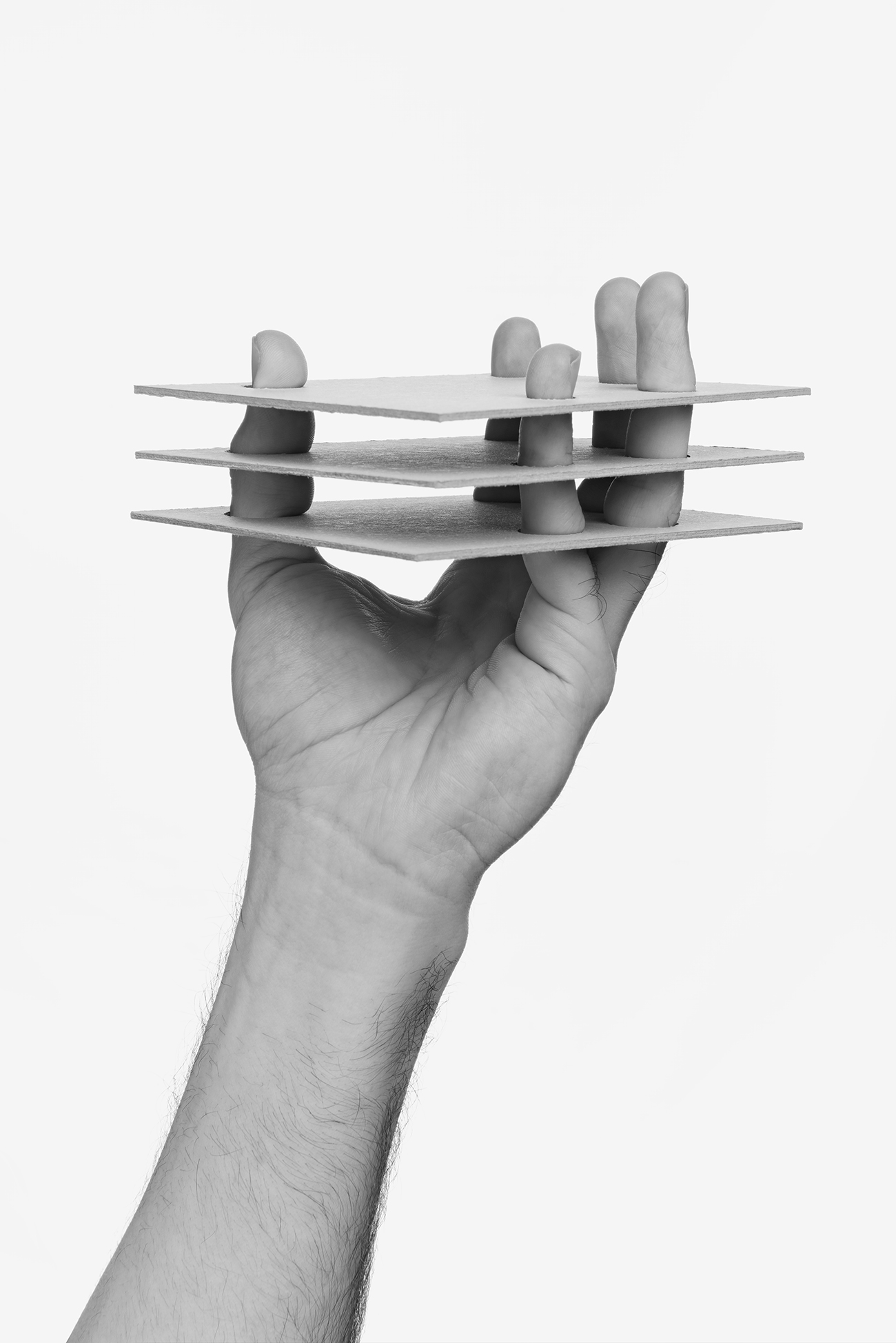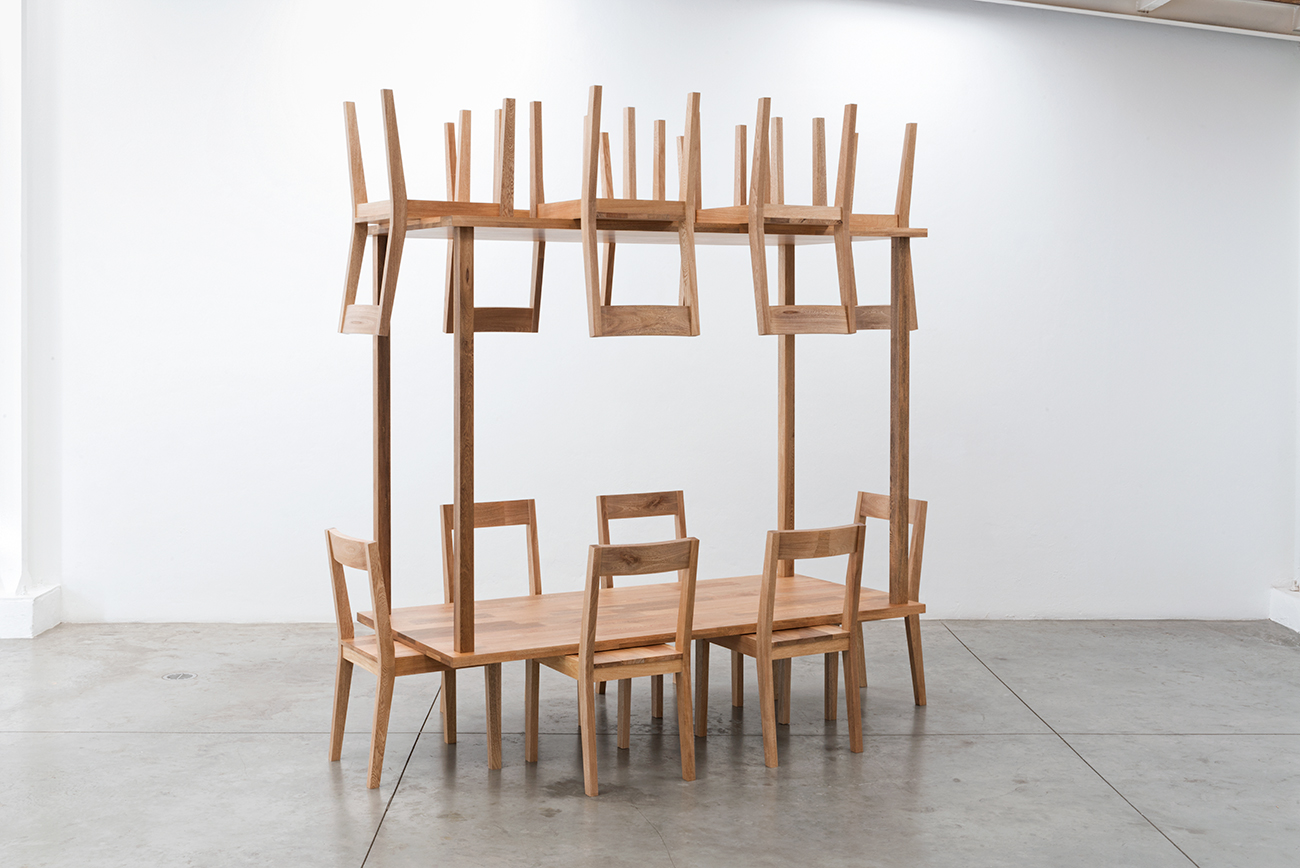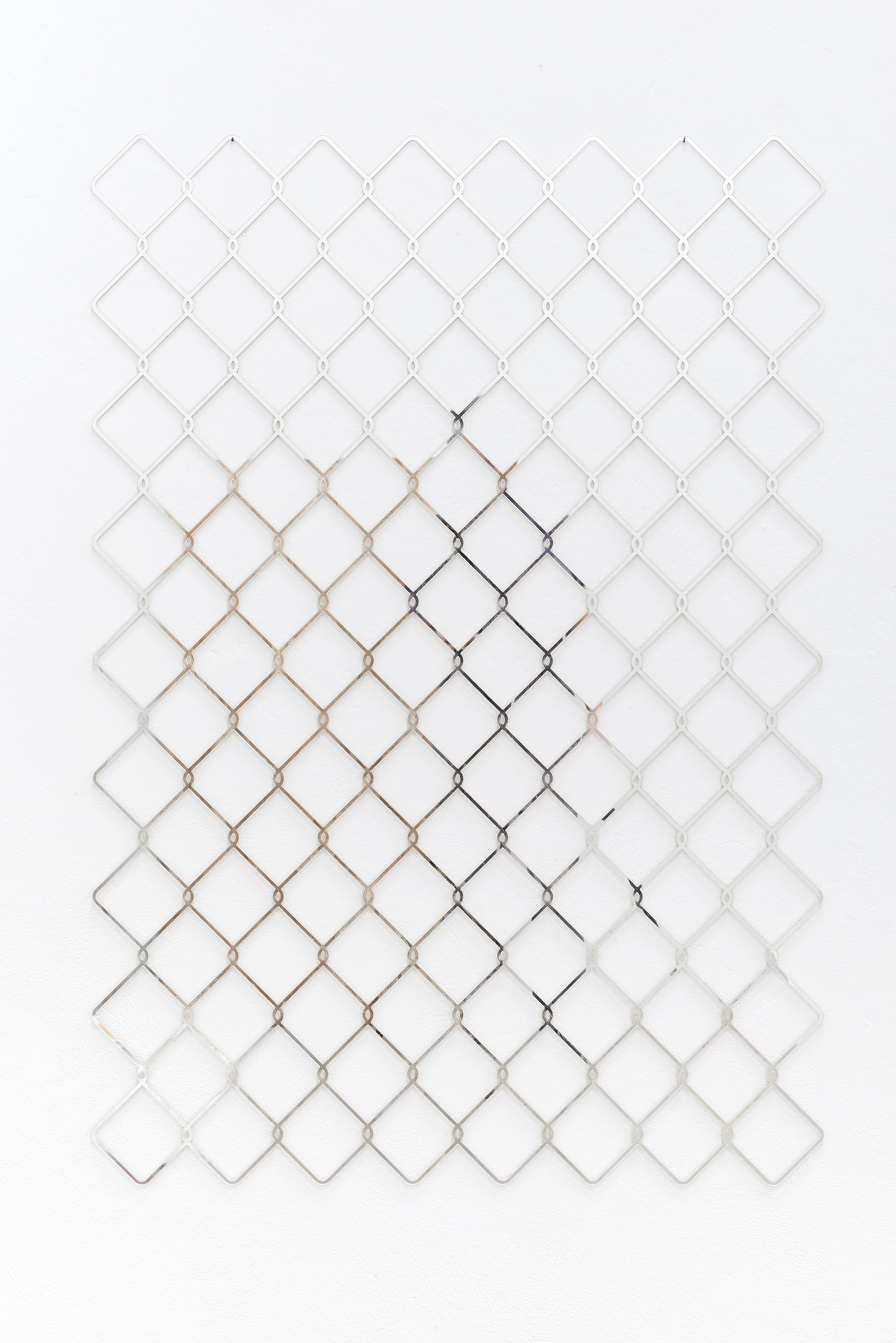Óptica mióptica
—
Naturaleza Muerta (Still Life) is comprised of two geometrical interpretations of an owl that resemble the two symbols used to represent Colcultura, an organization created in 1968 for promoting culture in Colombia.
Colcultura was closed in 1997, but it paved the way for establishing the current Ministry of Culture. The two versions of the owl, one designed by Marta Granados (vertical figure, ca 1968) and the other by Carlos Duque (triangular figure, 1983), reflect an inclination for certain institutions in the country to use this bird as part of their visual identity. This owl, which is derived from the figure of a barn owl (or more specifically a boreal owl), alludes to the Western journey of becoming, among other things, the bird that accompanies Athena, goddess of wisdom and the arts.
But the use of the owl has not been continuous since ancient times. G.W.F. Hegel, for example, brought it back to light by referencing it in the preface of his Elements of the Philosophy of Right (1820). In a different context, José Ortega y Gasset used it as a seal for the seminal Revista de Occidente (1923). In our context, this owl—or rather, these owls—marked an era in the understanding of culture in Colombia—they were seen as a universal symbol that overcame the influence of ancestral, pre-Columbian motifs in the graphic arts. And they became vigilant, enigmatic and enduring figures, even after Colcultura ceased to exist.
—
La esquina flaca (The Skinny Corner) lampoons the so-called ‘fat corners,’ volumes made in mortar and brick that fill the corners in major cities and towns in Colombia. Fat corners are used to prevent littering, loitering, public urination and public defecation. The volume of this piece is concave, as opposed to the convex volume of an ordinary fat corner. This piece is coated with creolin, a pungent disinfectant widely used in Colombia to clean biological residues.
—
La muerte del padre (Death of the Father) refers to a book written by Norwegian author Karl Owe Knåusgard (originally titled Min Kamp, My Struggle, but translated into Spanish as Death of the father). Strongly autobiographical, Knåusgard’s work recollects the passage from childhood to youth and from there to adulthood. Knåusgard’s conflicted relationship with his father—a distant yet unpredictable man—culminates with his early death, producing feelings of relief, helplessness and grief in a baffled Knåusgard. As a sculptural piece, the table suggests the patriarchal figure while the chairs, which grow as rhizomes, suggest the extension of the patriarch’s influence and of those who survive him. The cotton cloth hung over the piece, allude to feelings of exhaustion and caring.
—
Miradas sin nombre (the clarity hurts) (Nameless Gazes) is a series of pieces that resemble sunglasses, but due to their composition (or dysfunction), they suggest an asymmetric interpretation of the object. Apart from protecting our eyes from the sun, sunglasses are used as a way to avoid the gaze of others or to observe something or someone without being noticed. But what happens when shades refer to other uses beyond the personal? What types of negotiation take place when a whole group of people wears them? Miradas sin nombre lays out different situations in which shades mutate into a metaphor that invites the audience to think about different interpersonal relationships.
—
Planta libre (Free Plan) recalls this eponymous architectural paradigm using a photograph in which model and hand intersect to question the symbolic dimension of each. The fingers-as-pilotis suggest a stable construction; however, by the way the slabs are arranged, the fingers suggest a limited potential for fluid and organic movement.
Throughout the variations of modernist architecture, constructive models have implemented different modes of order and composition, many of them ignoring the geographical, cultural or functional nuances of the contexts where they have been implemented.
As an image, Planta libre provokes a reflection on the alternatives for coping with or objecting to such models, and also for think about the influence and scale of modern paradigms in architecture.
—
El principio del trabajo (The Foundation of Labor) is comprised of six chairs supporting an upside-down dining table. The table extends into a mirror figure that supports six additional chairs. The table and chairs stand as metonymic figures for, respectively, a system (capitalist) and the individuals (a labor force) that support it. Conversely, these figures sustain an additional system with individuals of a higher position perched upon it.
—
Óptica mióptica (Myoptic Optic) presents a crystal mirror cut in the shape of a chain-link fence. It suggests the tension between a fixation on personal image, the reflection of one’s own body in the mirror that becomes both the image of oneself and an other (the ‘little other’), and the opportunity to look through or beyond it.
—
NC
August, 2016
